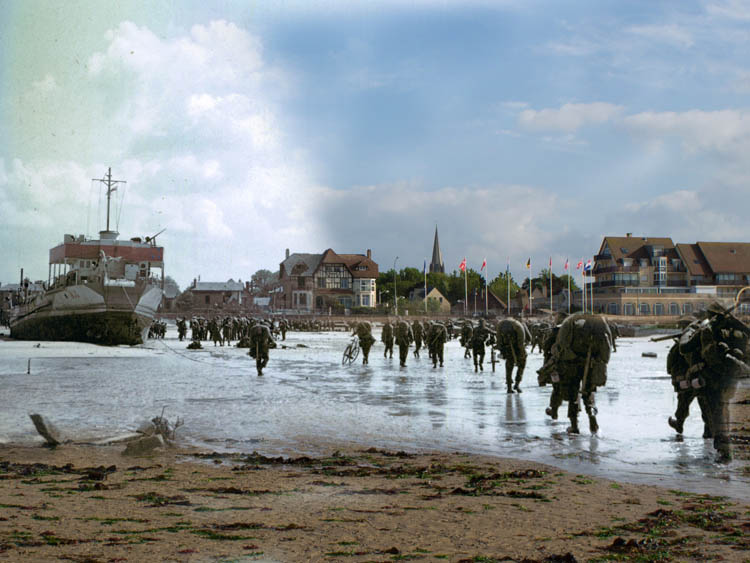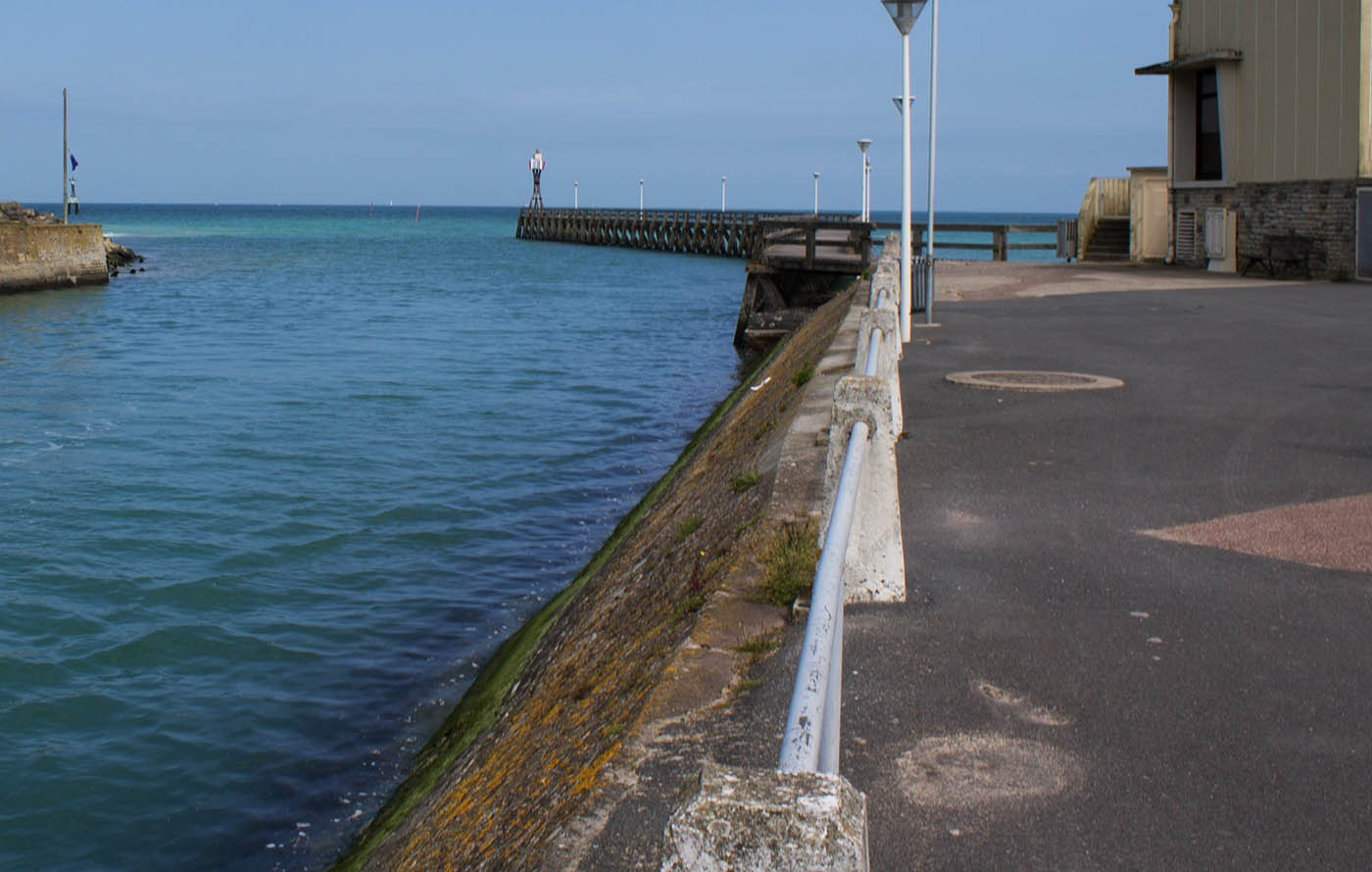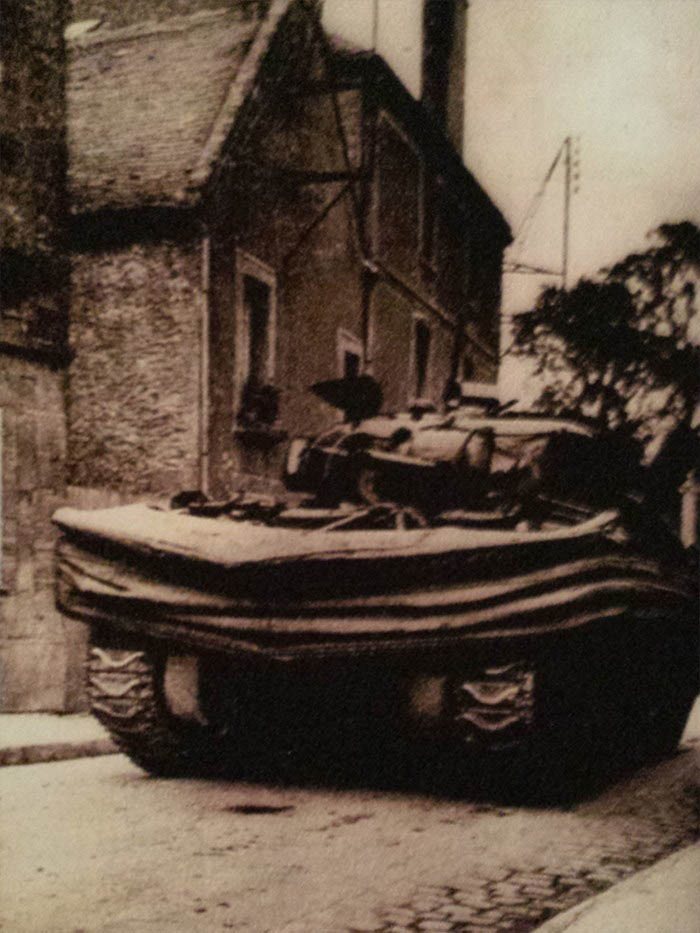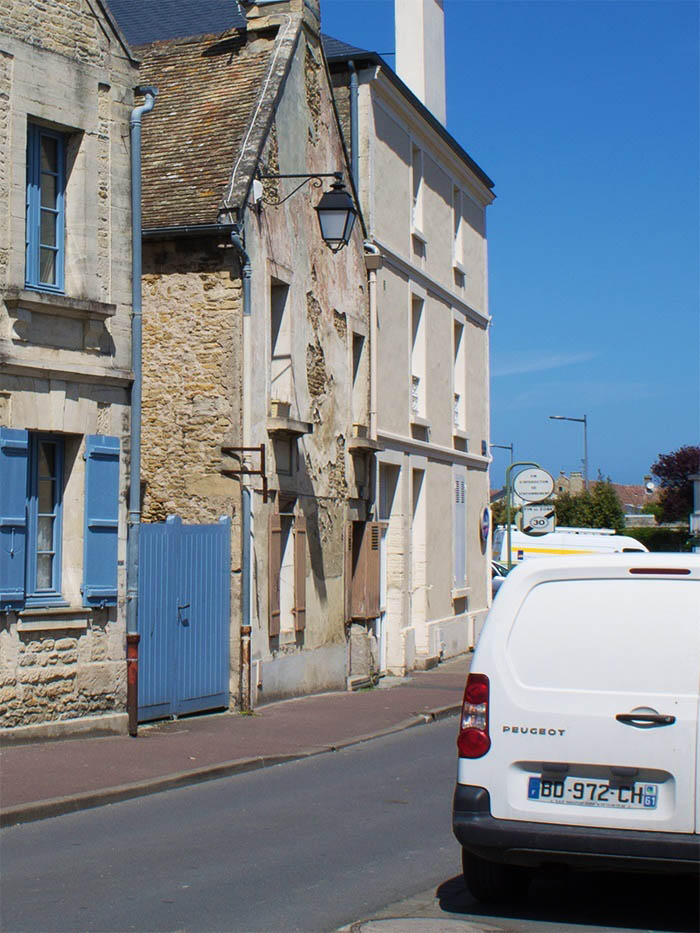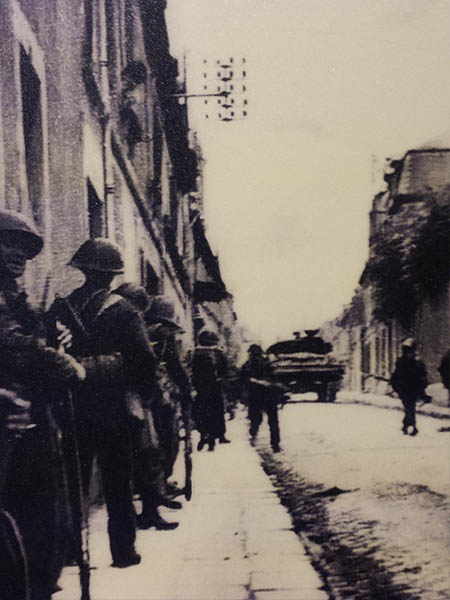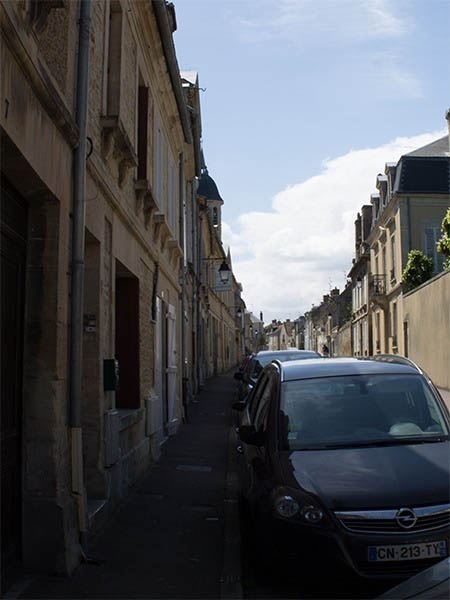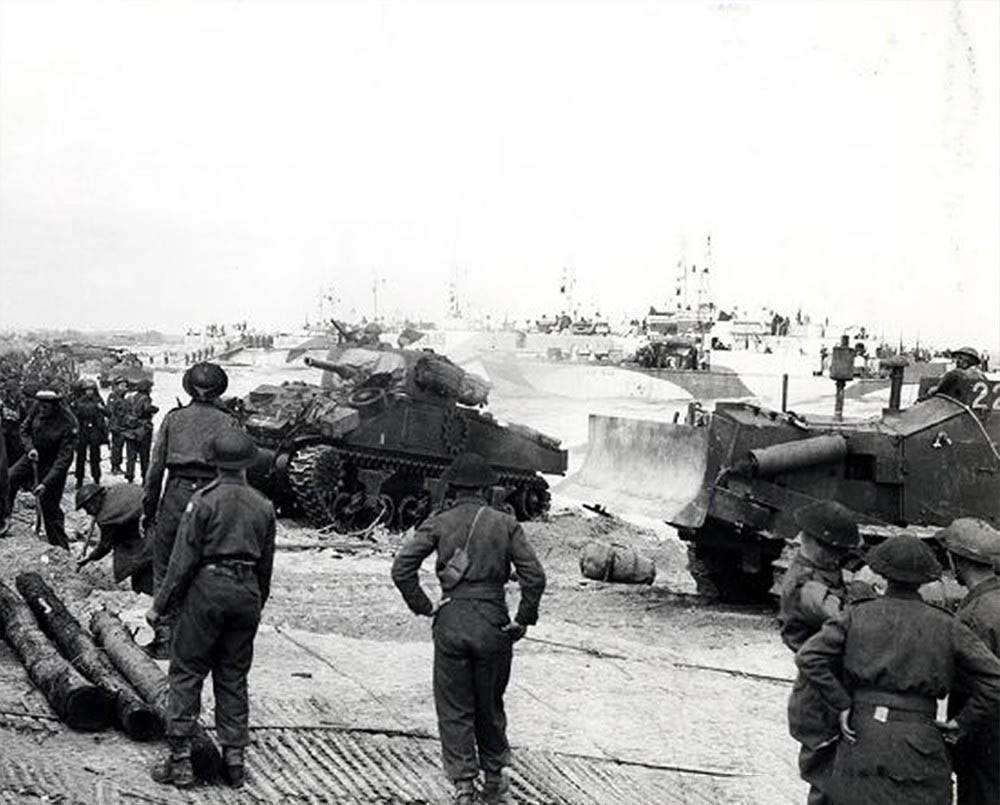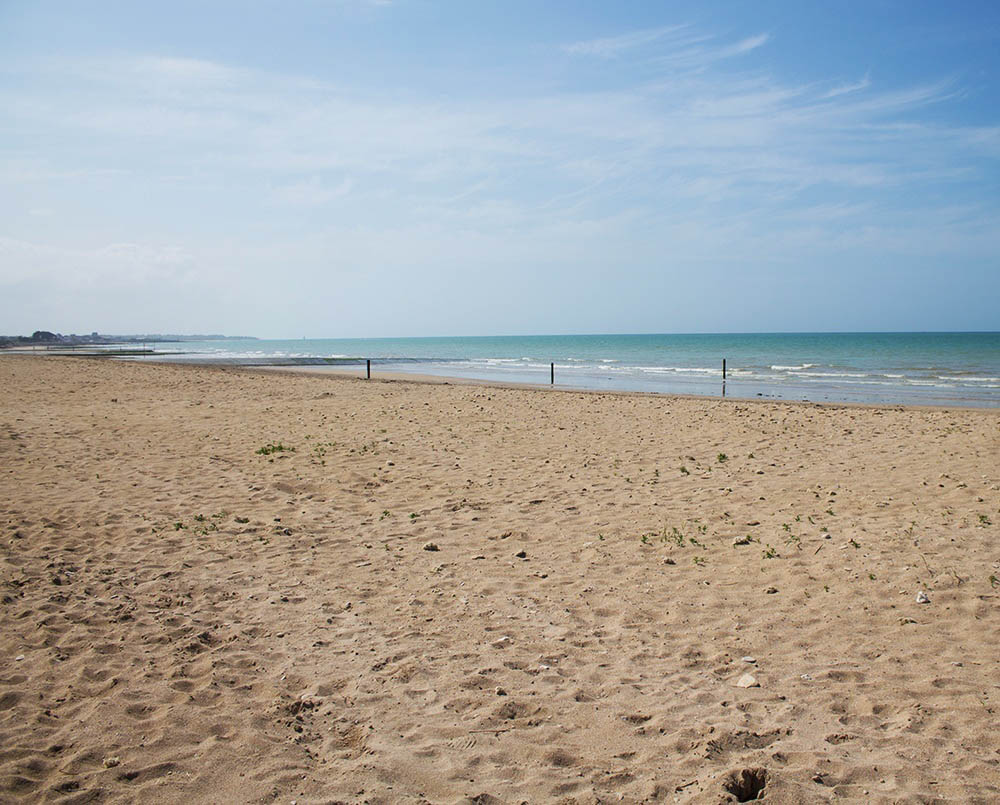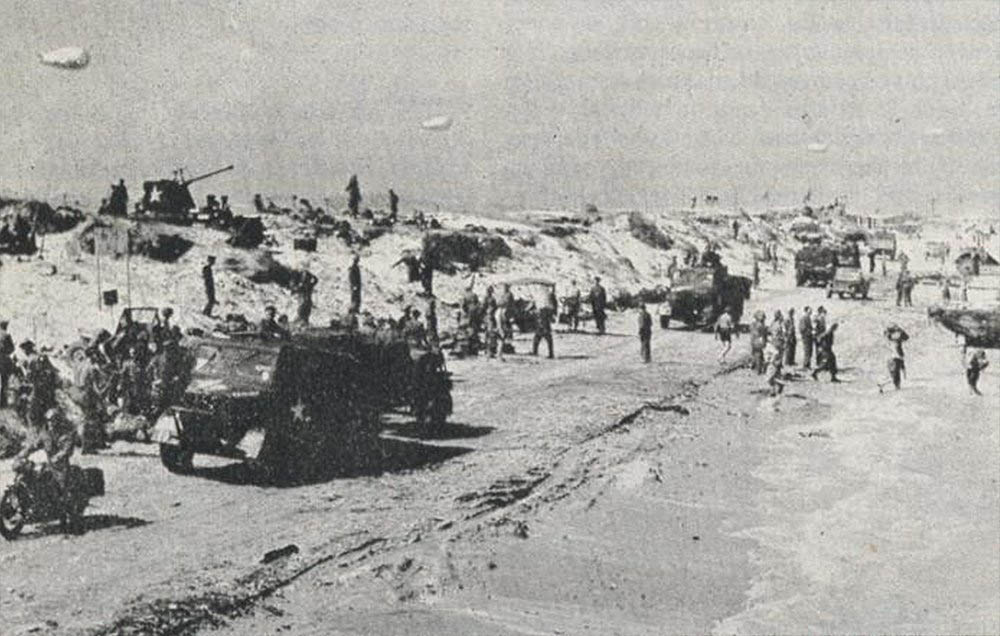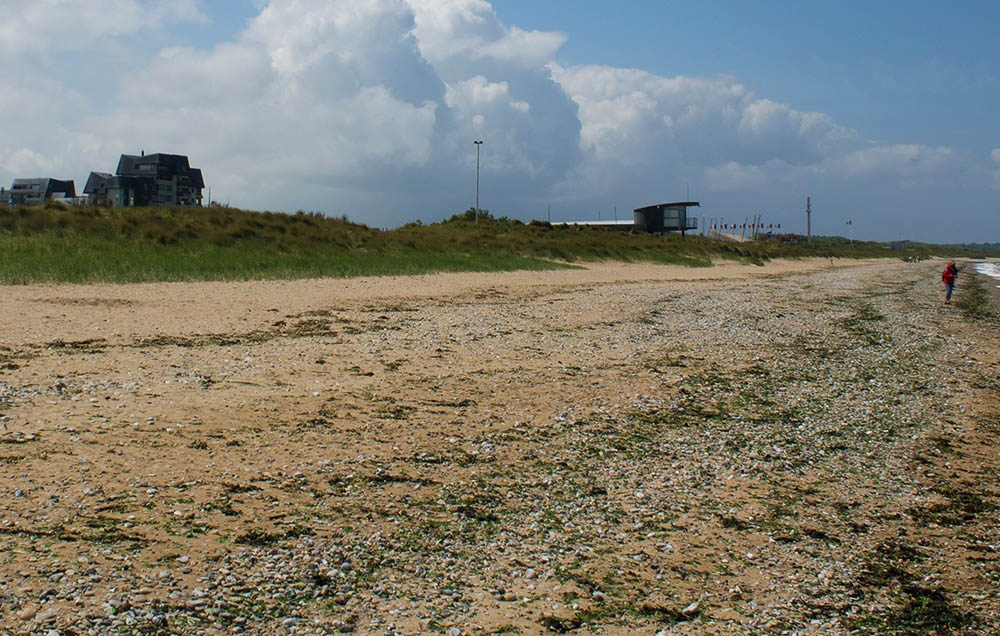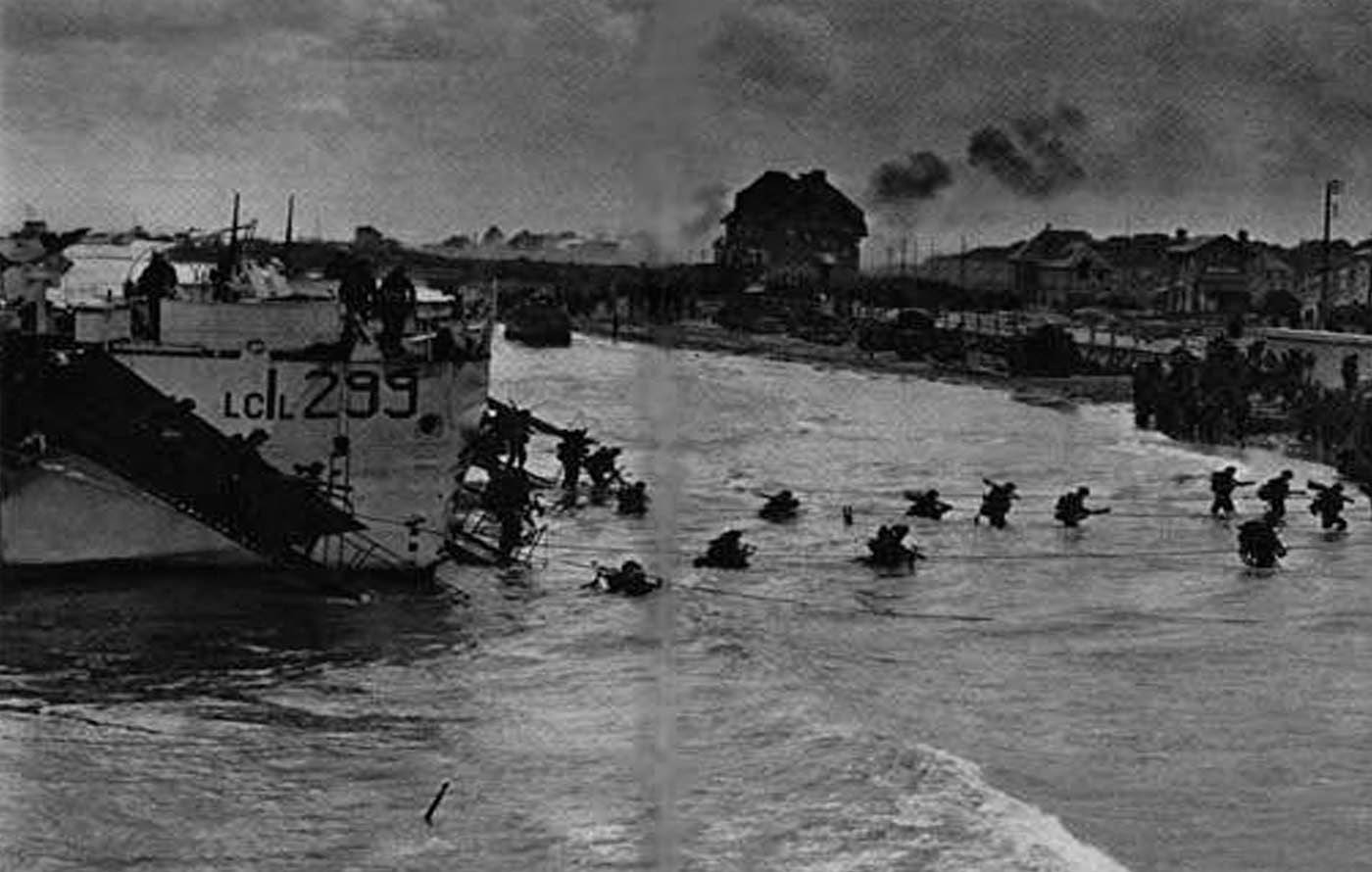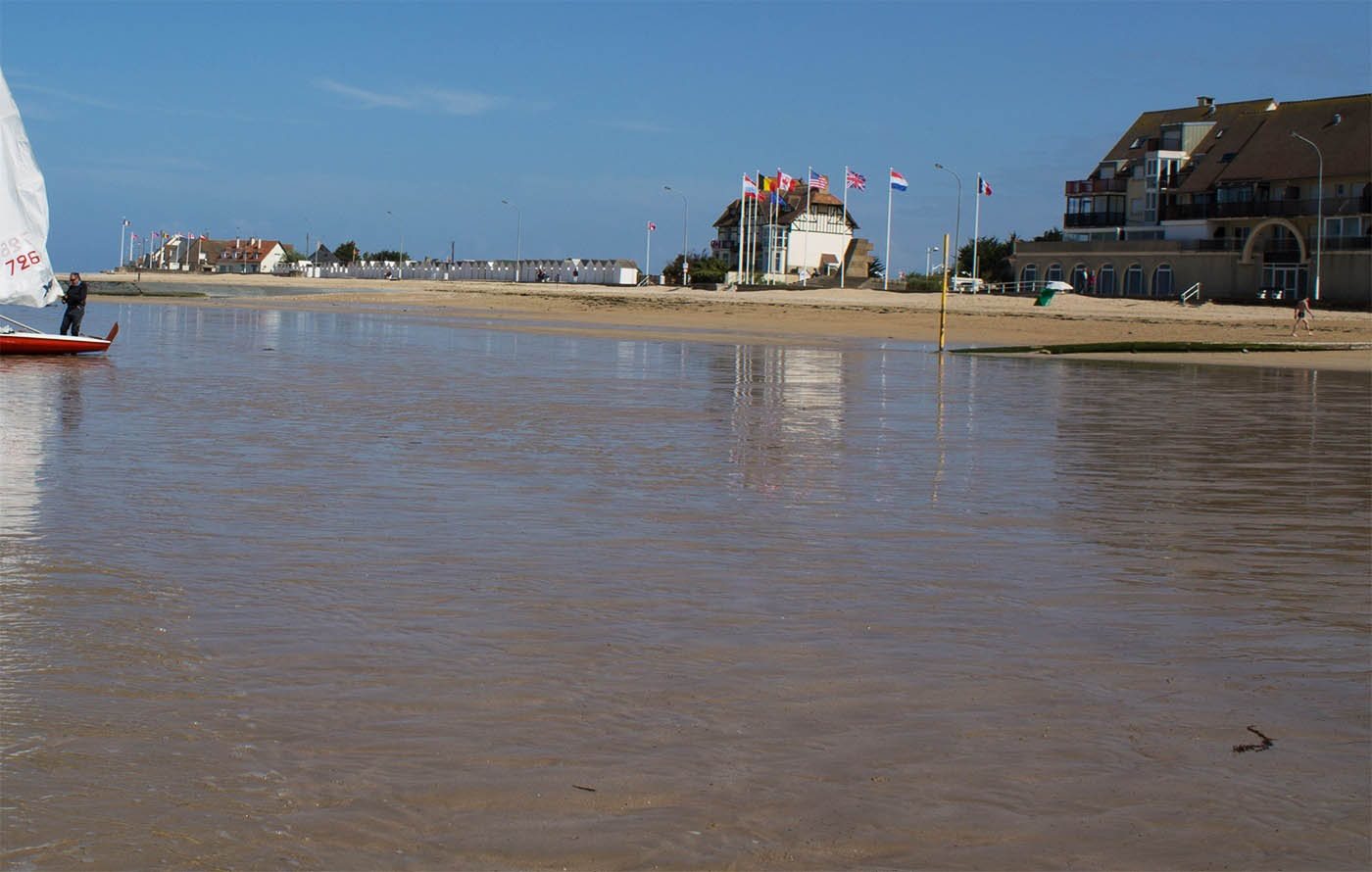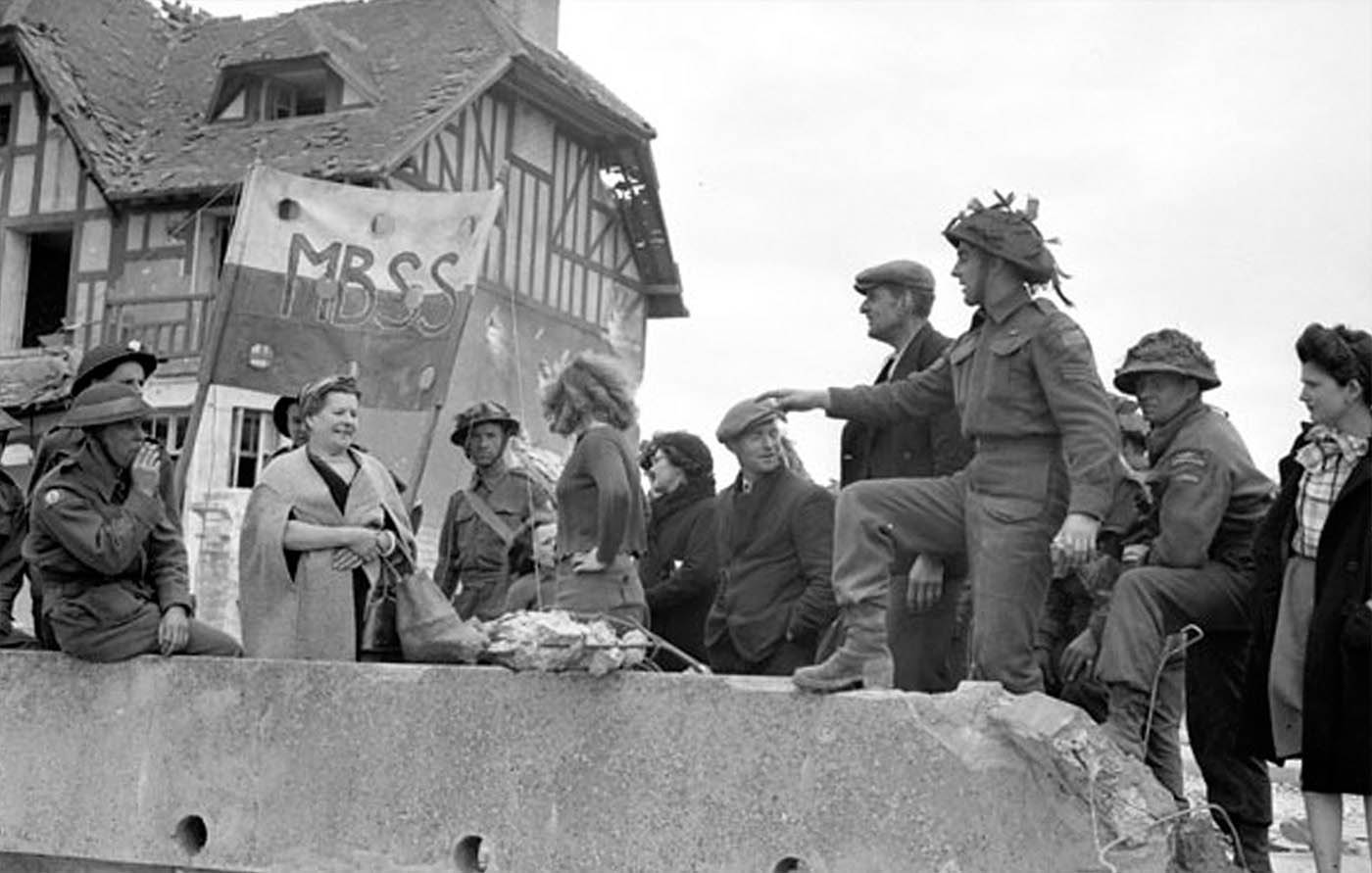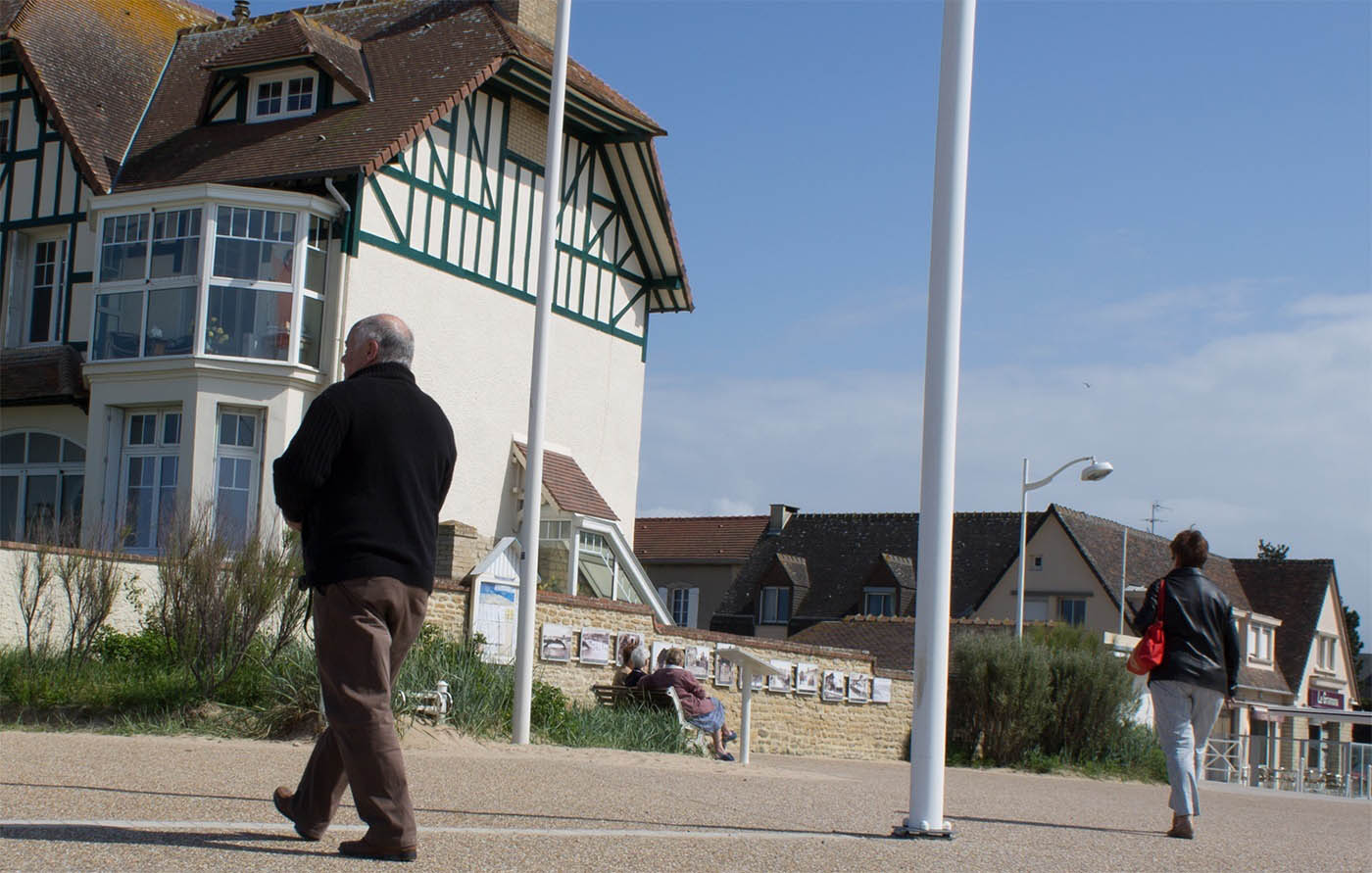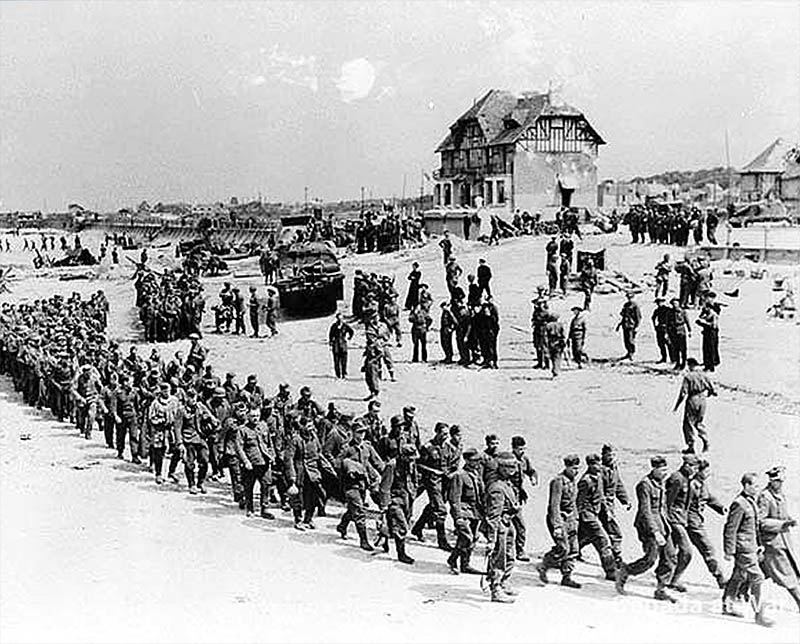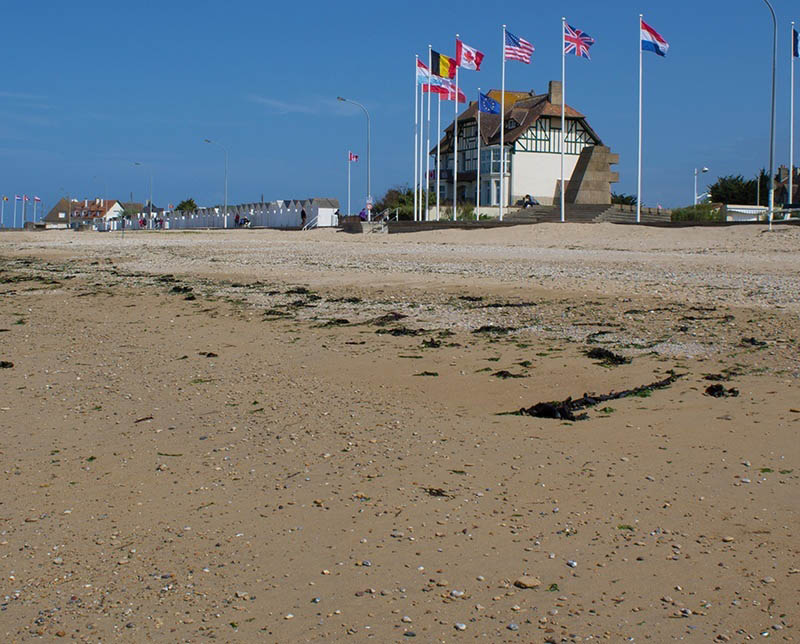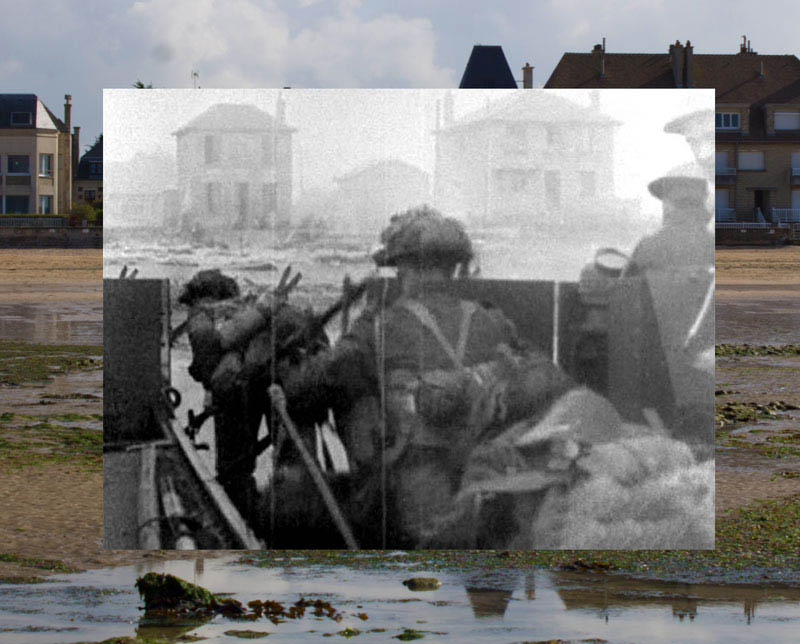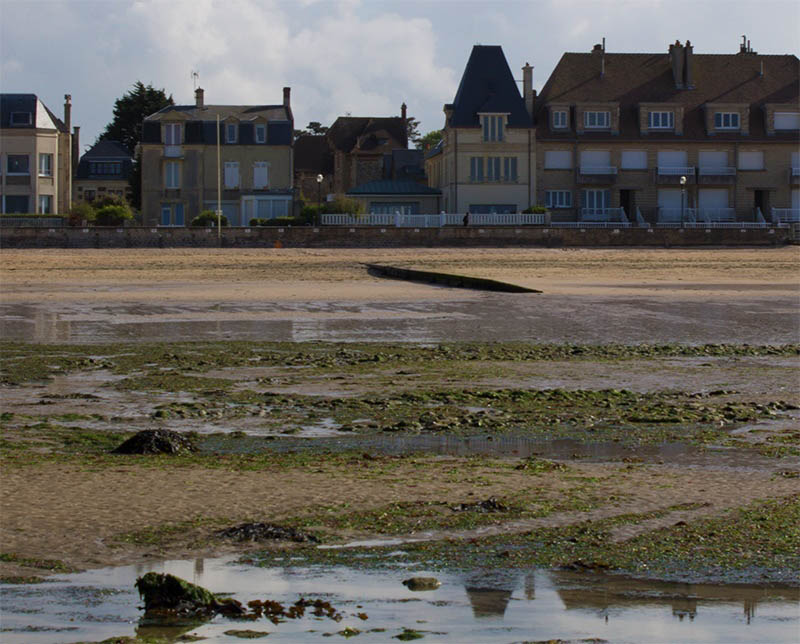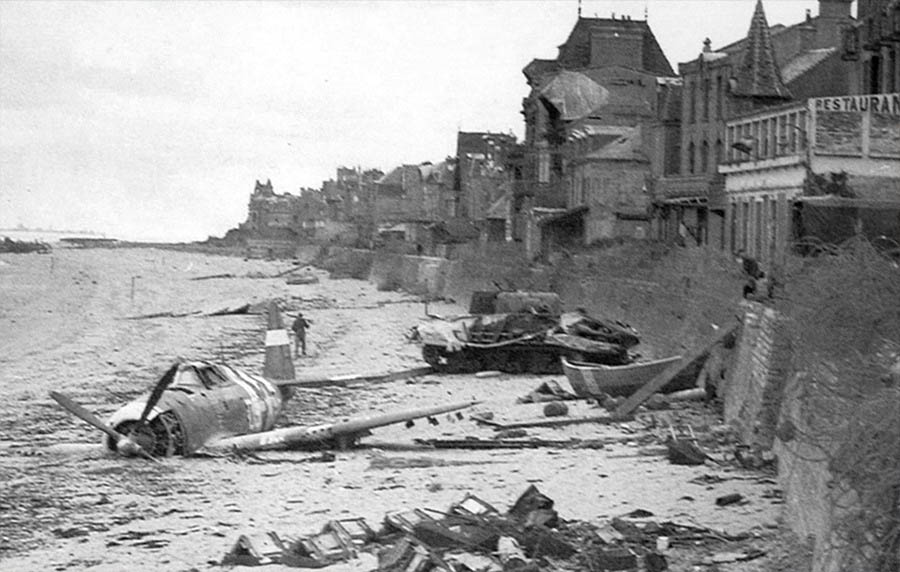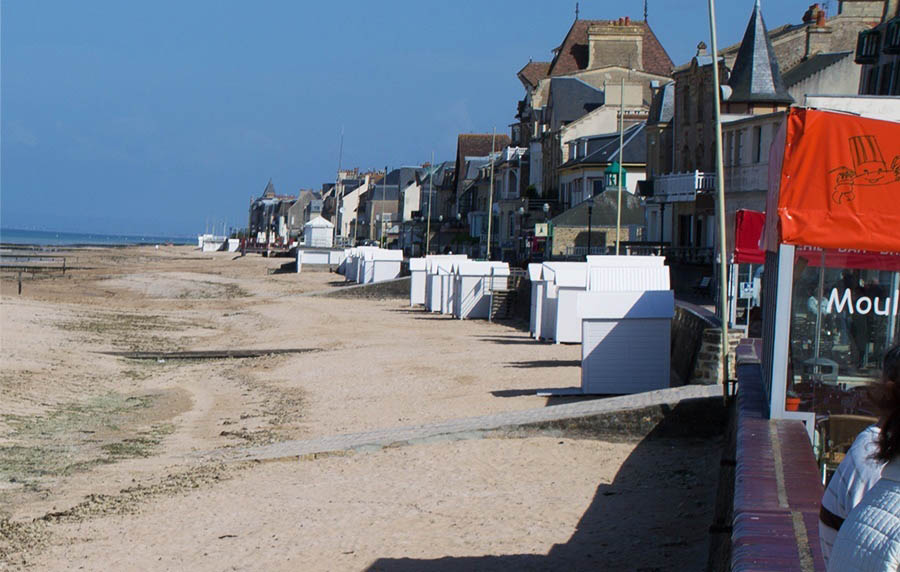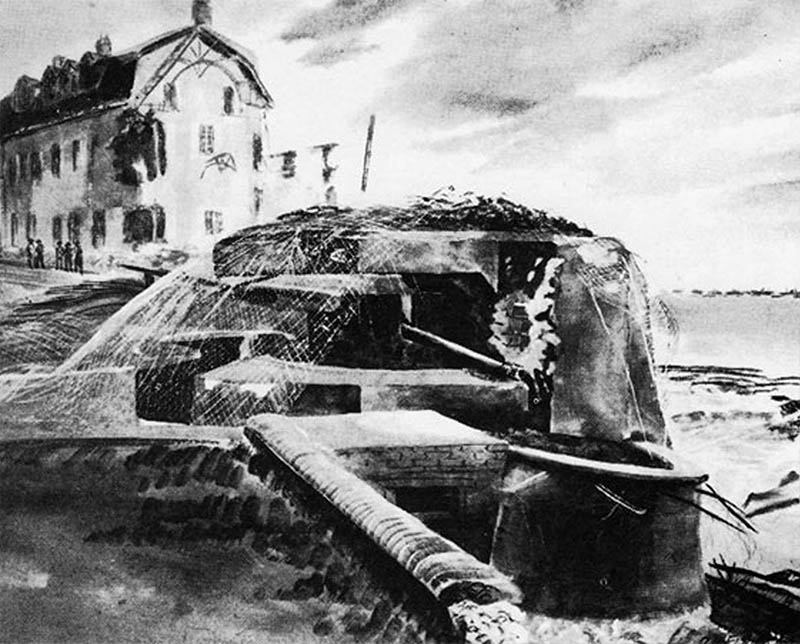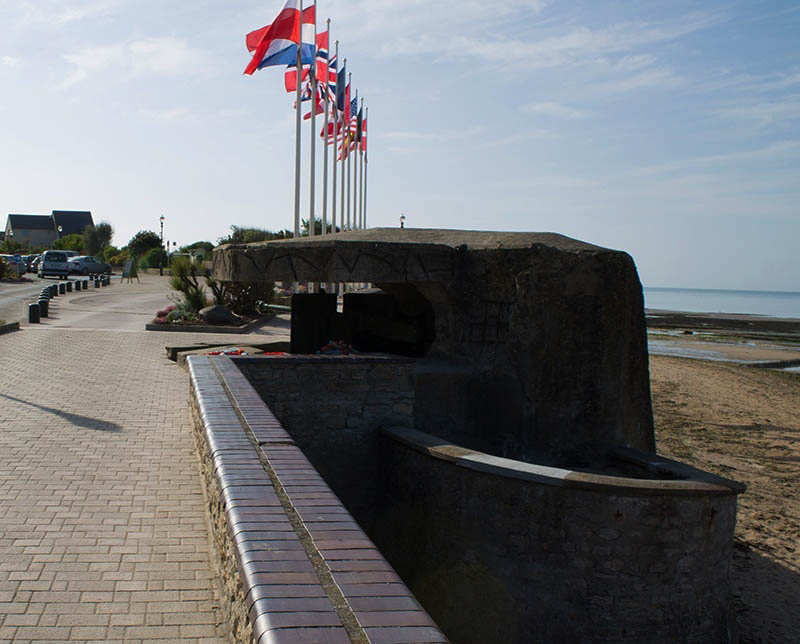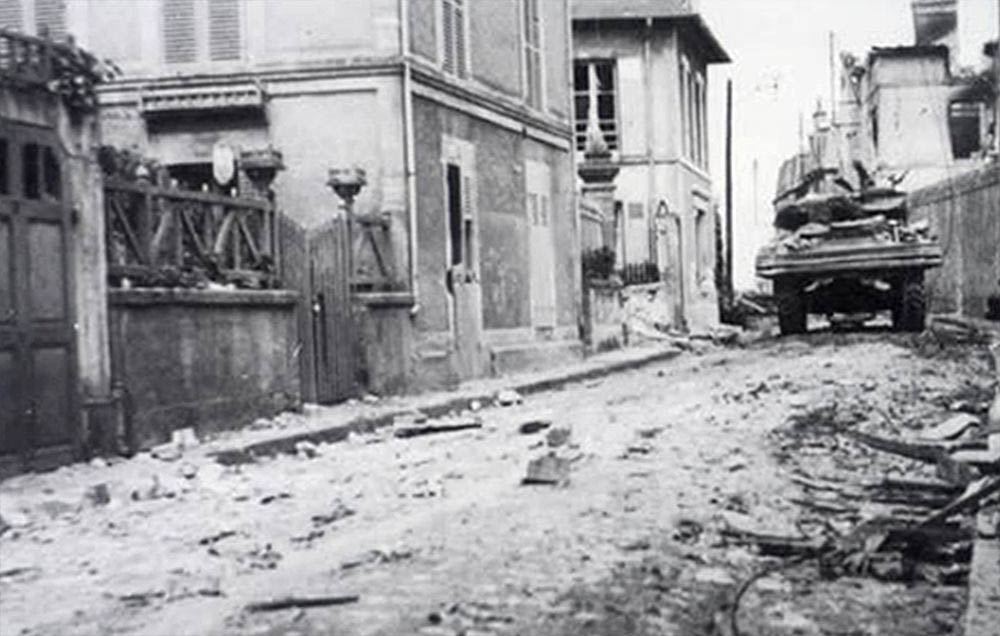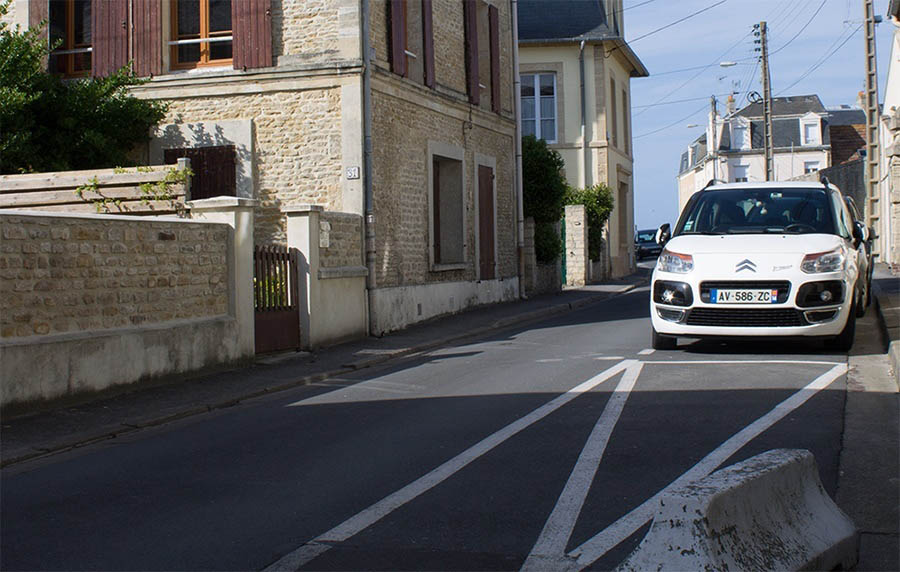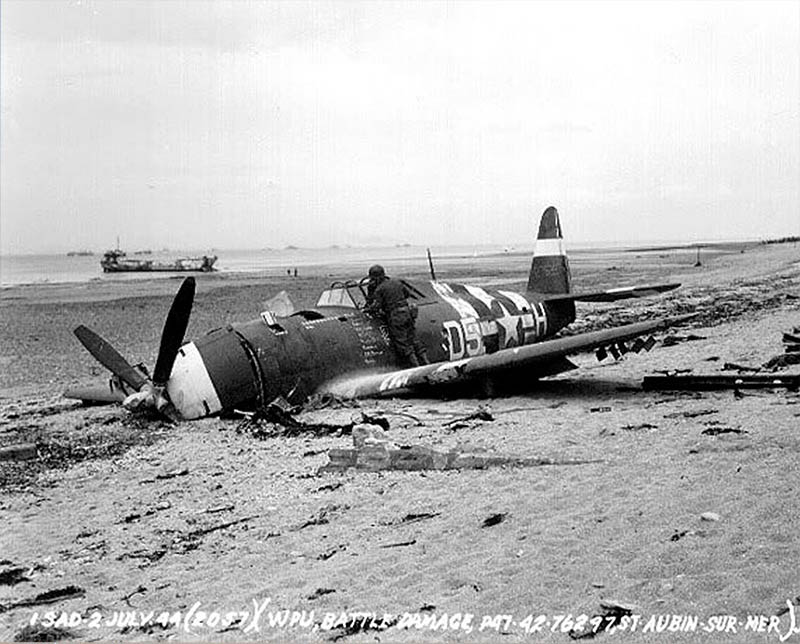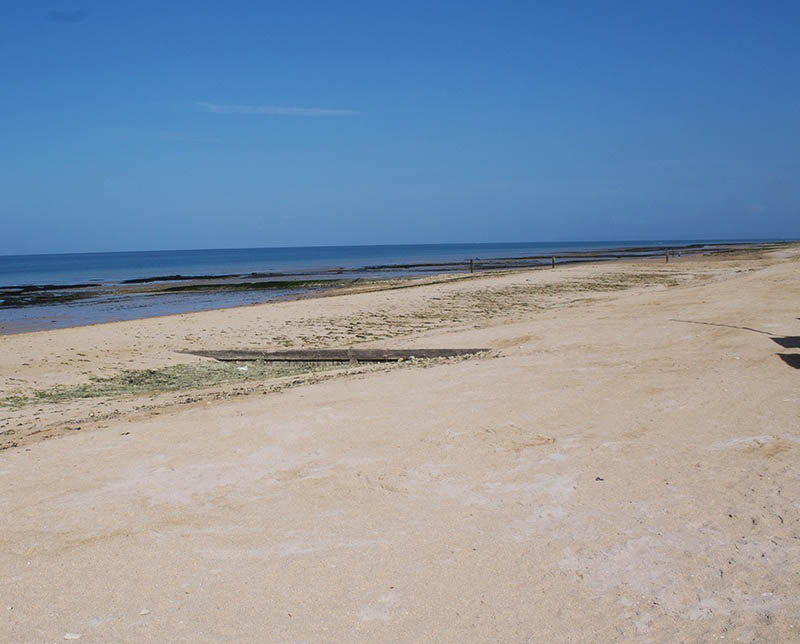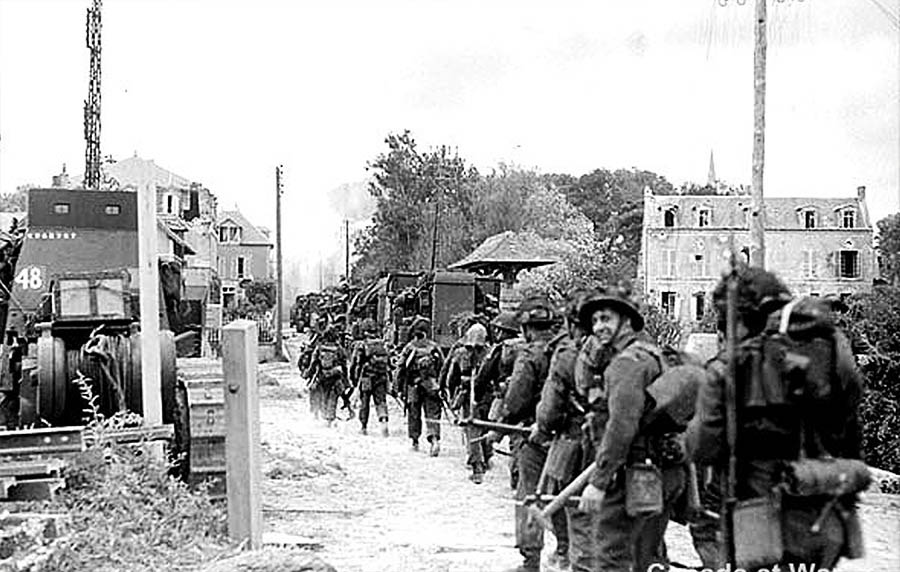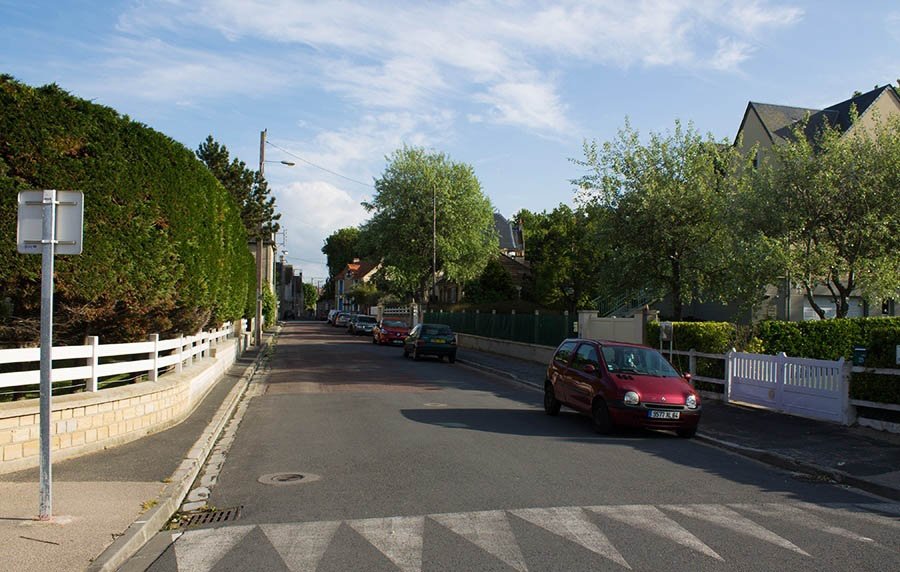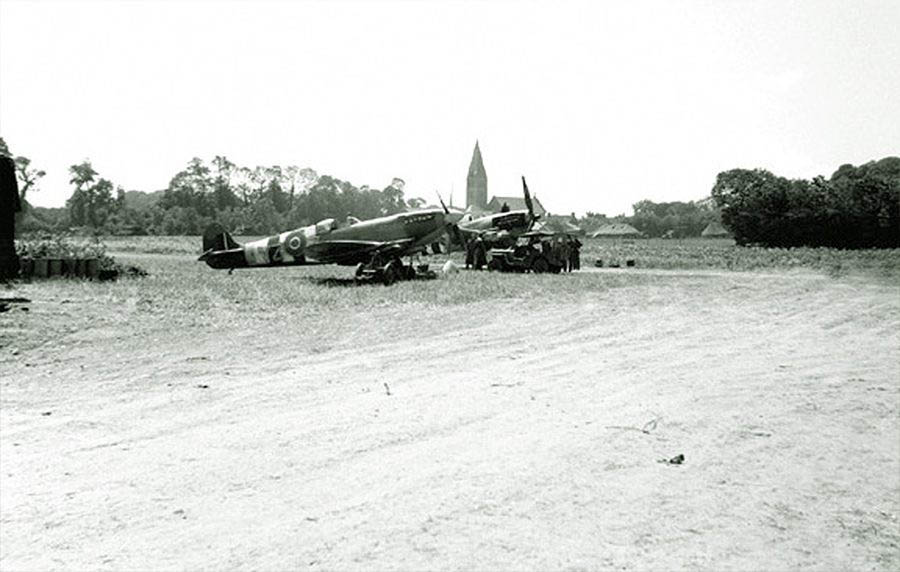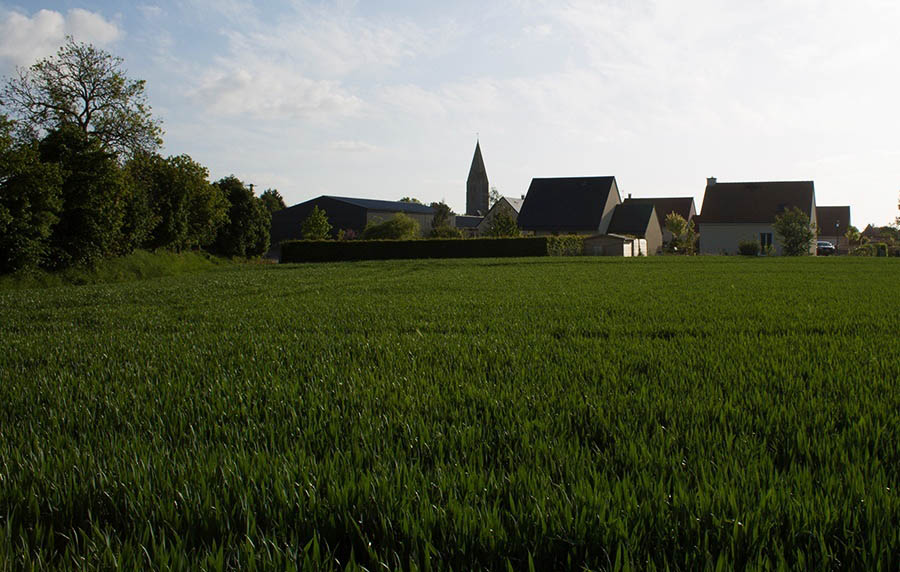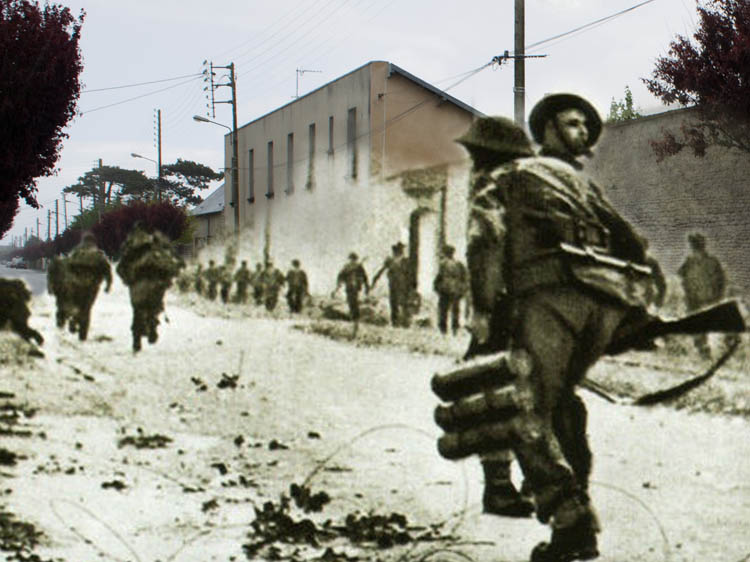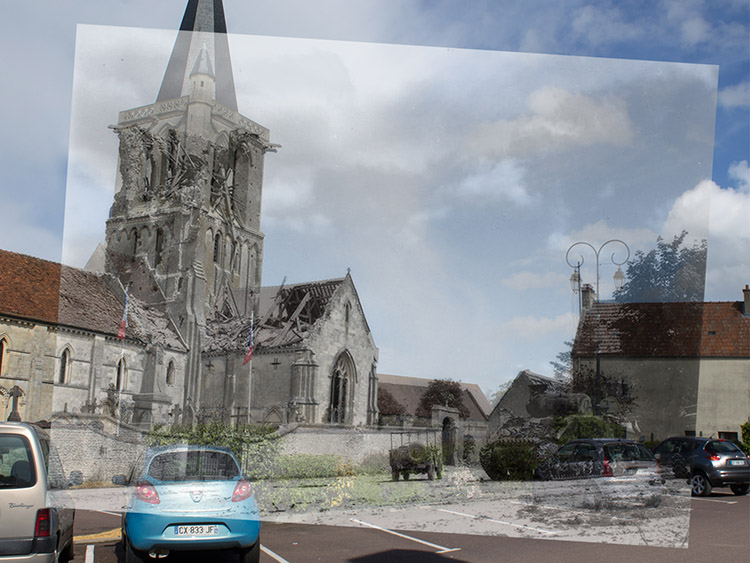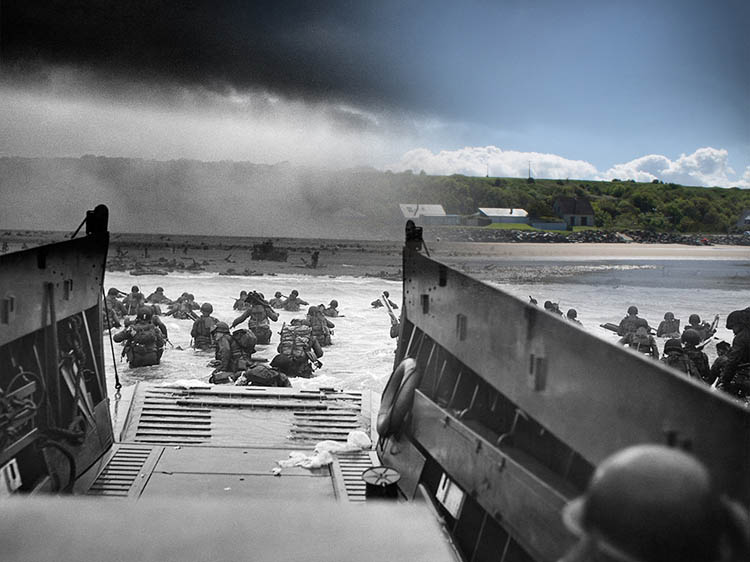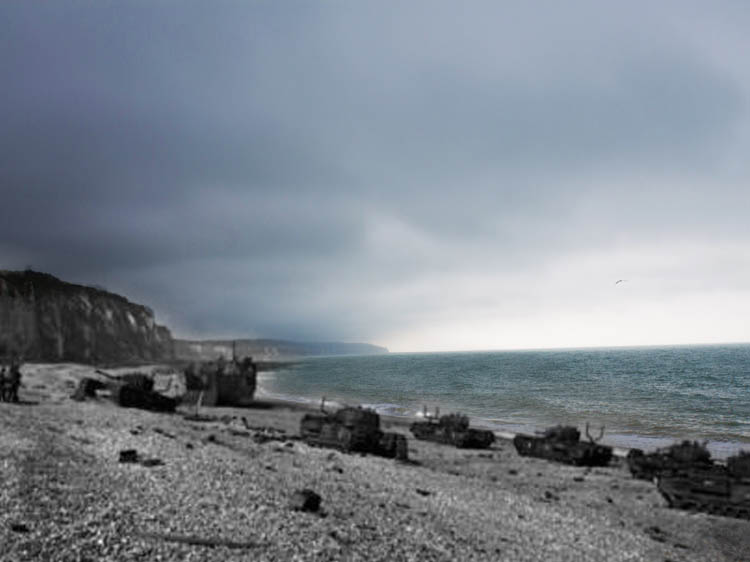Partner City
Juno Beach
The Canadians in Normandy
In the early morning hours of June 6, 1944, thousands of Canadian assault troops anxiously waited aboard their landing craft, straining to launch themselves against Hitler's Fortress Europe. They were taking part in Operation Overlord, the largest amphibious operation in history. The Canadians and their British and American allies would storm the beaches of Normandy and begin the long and arduous task of liberating occupied Europe. The sector assigned to the Canadians was codenamed Juno. Stretching along five miles of sandy beaches, Juno Beach included the three small resort towns of Courseulles-sur-Mer, Bernieres-sur-Mer and Saint-Aubin-sur-Mer. Waiting for them were men of the German 716th Division. They had erected thousands of obstacles, belts of thick barbed wire and dozens of minefields. Steel-reinforced concrete bunkers brimming with anti-tank guns, machine guns, and riflemen overlooked the beaches. Mortars and artillery were pre-sighted on the landing grounds. They were determined to prevent the Allies gaining a foothold in France. Victory at Juno would come at a heavy price: by the end of the day 340 Canadians lay dead. Hundreds more were wounded. These were the heaviest casualties on any beach save the near-disastrous American assault on Omaha. Yet the Canadians were also the only units to reach their D-Day objectives, advancing further inland than any other Allied army. As the historian John Keegan remarked, "That was an accomplishment in which the whole nation could take considerable pride." In this photo essay we'll take a tour of Juno Beach today, learning about the men drawn from across Canada who fought on these beaches and carried the day. I took all the recent photos myself in May 2015, while the historical photos are drawn from a variety of sources.
Explore
Juno Beach
Then and Now Photos
Destroyed Gun Position
Courseulles-sur-Mer Online Postcard Collection
1944
A German 50mm gun position protecting the harbour of Courseulles. You can see from the holes in the gun shield that the gun has taken a direct hit, probably from a Canadian tank. Courseulles was heavily defended with concrete bunkers housing anti-tank guns, machine gun nests and mortar pits but the Canadian troops were able to quickly overcome these defenses and clear the beaches.
At Courseulles there is a small harbour for fishing vessels. To the west of the harbour is a long sandy beach backed by a short rise in the ground. On June 6 a dozen machine gun nests and a number of anti-tank guns defended this stretch of beach. The Winnipeg Rifles and a company of the Canadian Scottish (Victoria, B.C.) landed here and were met by a torrent of machine gun and mortar fire, but they were able to claw their way ashore. In front of Courseulles itself the Regina Rifles landed. They took heavy casualties coming to grips with the Germans - one landing craft boatswain reported six men killed before reached the bottom of the ramp. Yet they too were able to work their way into the town and secure a toehold.
Leo Gariepy's Sherman DD
1944
The Sherman DD tank commanded by Leo Gariepy rumbles through the streets of Courseulles in the first moments after the invasion. Shortly before this photo was taken his tank had knocked out a German anti-tank bunker. In Courseulles a street and a memorial are named after him and he has a rather lengthy entry on the French Wikipedia. Gariepy returned to Courseulles in 1964 to a warm welcome. When the Mayor of Courseulles and local dignitaries were greeting him a young man approached the veteran and said "Je n'etais pas ne en 1944. Permettez-moi de vous serrer la main." "I was not born in 1944. Allow me to shake your hand." It was a moment of high emotion that is remembered by the people in the picturesque town today. Gariepy was made an honourary citizen of Courseulles and lived out the rest of his days there.
Troops in Courseulles
1944
Troops from the Regina Rifles follow Gariepy's tank through the streets of Courseulles at about 9:00 in the morning. They will shortly be engaged in battle with a German strongpoint located several hundred yards ahead in the fields just behind the town. Gariepy's tank is credited with helping overrun the position, knocking out machine gun nests and forcing the surrender of 50 Germans. These are sometimes claimed to be the first prisoners taken by the seaborne forces during Operation Overlord.
Trucks on Courseulles Beach
1944
The disembarkation of men and supplies at Courseulles is seen continuing here in August. Today the Juno Beach Centre, a museum commemorating Canada's role on D-Day, is right behind the rise in the ground. It is well worth a visit.
Disembarking from an LCL
1944
Canadian troops with bicycles disembark from LCIs (Landing Craft Infantry) on the afternoon of June 6 at Bernieres. The original photographer was standing on the deck of an LCI when he took this photo and unfortunately I had no LCI to stand on to get the perspective just right.
French Civilians Celebrating
1944
The Regiment de la Chaudiere landed hot on the heels of the Queen's Own. Here they are in front of Canada House speaking with French civilians, who were reportedly enthused at the 'earthy' variety of French spoken by the soldiers from Quebec. Soon they would be pressing inland to engage the enemy.
German Prisoners
War Chronicle: Canadians in Normandy
1944
A batch of Wehrmacht prisoners is marched to waiting ships to be taken into captivity in England.
Canadians Storming Ashore
1944
The Then photo is a still taken from a famous video of men from New Brunswick's North Shore Regiment landing at Saint-Aubin. I walked up and down the entire beach sector and could not find houses matching those in the video, so this is my best guess as to where they landed. The video itself is one of the most famous in Canada's history, and represents the only footage from any army of first wave troops landing on D-Day.
The North Shore Regiment from New Brunswick landed at Saint-Aubin, supported by tanks of Winnipeg's Fort Garry Horse. The troops leapt from the landing craft only to find themselves up to their necks in water, all the while machine gun bullets ripped through the air around them. The strongpoint ahead of them had been untouched by the naval bombardment and the North Shore men took heavy casualties crossing the wide beach. Many of them stepped on land mines. The German strongpoint was anchored on an anti-tank gun bunker. Photos from the time allow us to retrace what happened next.
Wreckage at St. Aubin
D-Day Overlord: La Bataille de Normandie
1944
Saint-Aubin after the battle. One of the DD Sherman tanks from the Fort Garry House has been knocked out, its gun aiming towards the photographer. What the picture doesn't reveal is that the photographer was standing almost on top of the anti-tank bunker that knocked the tank out at nearly point-blank range. One imagines moments of frantic and gut-wrenching human drama.
Knocked Out Bunker
1944
This is the gun emplacement that knocked out a DD Tank visible in a nearby photo. Its cannon was still pointed back at the tank at the time. It also accounted for three more of the Winnipegger tanks. It proved impossible for the tanks on the beach to neutralize this position - the only way to knock out these bunkers was to put a shell directly in the embrasure. It was only when another DD Sherman penetrated the town and attacked the gun from the land side that the gun was put out of action.
DD Sherman on Rue Canet
1944
This dramatic photo shows that other DD Sherman approaching from the land side. The bunker is just down the street, about 30 metres in front of the tank. This photo was taken within moments of the tank firing on the bunker and putting a shell right in the embrasure, killing the gun crew.
Crashed P-47
1944
An American P-47 crash-landed on the beach at Saint-Aubin on June 10, several days after D-Day. This photo was taken a few weeks after that.
Troops Marching Inland
1944
Cheerful troops from the Regiment de la Chaudiere begin the march inland from Bernieres on the afternoon of June 6. They could look forward to months of bitter fighting in Normandy against SS Panzer Divisions, the best formations in Hitler's armies. I took the photo from the exact right spot, but unfortunately there is a hedge covering the building at the background left which still stands, though you can see a little bit of the wall.
Beny Sur Mer Airfield
1944
Spitfires of the RCAF at the temporary airfield at Beny-sur-Mer, just behind the beachhead.

